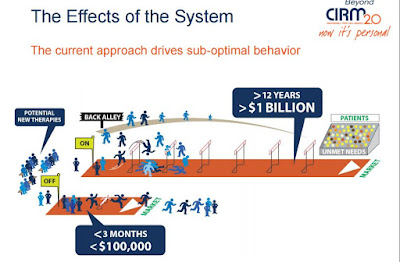 |
| Locations of stem cell clinics identified in Knoepfler/Turner study Graphic by Cell Stem Cell |
California led the nation with 113 clinics, with Beverly Hills having the most (18) of any city. The clinics promise to cure or ease afflictions ranging from autism to Alzheimers through the use of scientifically untested treatments.
The study is the first effort to get a handle on the size of an industry that has been little regulated by the Food and Drug Administration (FDA) but appears to promise almost miraculous results.
Results of the study were reported yesterday in the Washington Post, the Los Angeles Times, Fox News, The Sacramento Bee and many other outlets. A search at midday today on Google turned up 7,230 citations, including articles in France, Mexico and Italy.
One of the authors of the study from the journal Cell Stem Cell is Paul Knoepfler, a stem cell scientist at UC Davis. He has long campaigned for more action dealing with some of these clinics. In September 2015, he wrote on his blog about what he called "predatory clinics."
"These clinics prey on vulnerable patients and their families. The clinics use hope as a marketing tool. A weapon.
"As the number of such clinics has mushroomed in the US and elsewhere the risk to both patients and to the larger stem cell community proportionately rises too. We are in a situation today where the dangers from such clinics have never been higher."
Co-author of the study, Leigh Turner of the University of Minnesota, said in an article in The Bee by Adam Ashton,
"The problem is that so much of the information that’s provided by the industry, so many of the marketing claims being made, they’re not particularly accurate. They’re not trustworthy, and they don’t have any meaningful science behind them."In a story by Karen Kaplan in the Los Angeles Times, Turner said,
"There is an obvious need for the FDA, FTC (Federal Trade Commission), state medical boards and other regulatory bodies to play a more effective role in regulating the marketplace for stem cell interventions.' Without it, these clinics are able "to peddle false hope for sizable profits.'"
Randy Mills, president of California's $3 billion stem cell agency, said in The Bee that the Knoepfler/Turner study "highlighted a 'broken system' at the FDA that lets some clinics proceed with almost no oversight while requiring others to undergo studies that could tie up their services for decades. He said there are likely far more clinics offering stem cell therapies than Knoepfler and Turner identified, with many of them operating discreetly.
"'There’s so much stuff going on today, but it’s going on because that’s the system the FDA set up and that’s the system the FDA incentivizes,' he said."
"'There’s so much stuff going on today, but it’s going on because that’s the system the FDA set up and that’s the system the FDA incentivizes,' he said."
Knoepfler noted a bit of irony yesterday concerning the study in a posting on his blog, The Niche. He wrote,
"I’m glancing over at the (Scientific American) article (on the study) just now and BOOM I see an ad for a stem cell clinic appear at the top and it is even one of the ones in the database we created for our article. The ad is focused on selling stem cells to treat autism in children, an area that raises a lot of questions.
"How can it be a good thing to have an ad for a stem cell clinic right next to the article about the challenge of stem cell clinics in America? The way the web works these days, perhaps it isn’t so surprising that articles having anything to do with stem cells will often be accompanied by ads for stem cell clinics. This one just really stuck out to me today because of the context."
Google and other media outlets routinely place advertisements for these stem cell clinics on many Web sites and blogs, including this one. Some of the newspapers carrying stories about the Knoepfler study also carry ads for such clinics.










